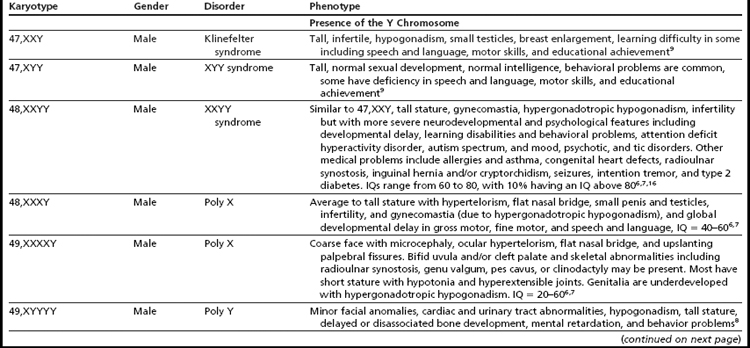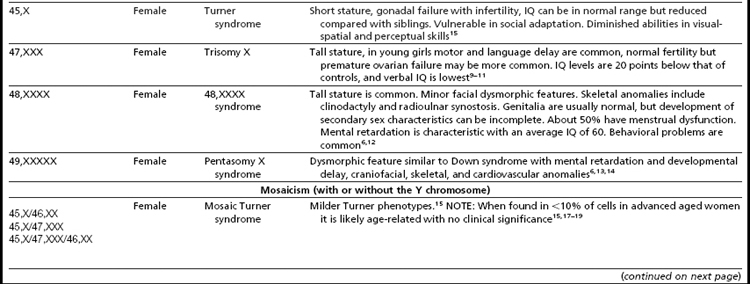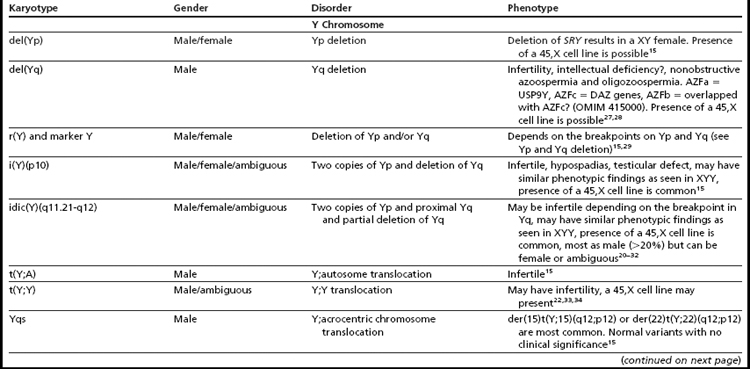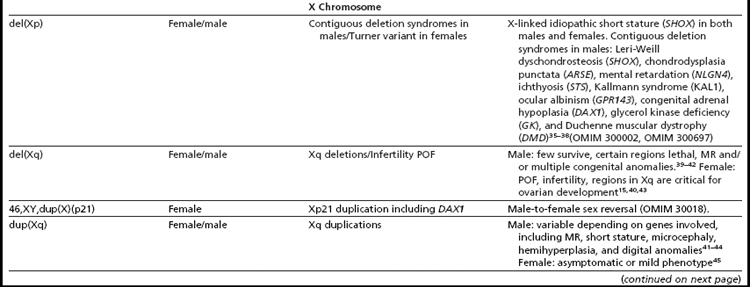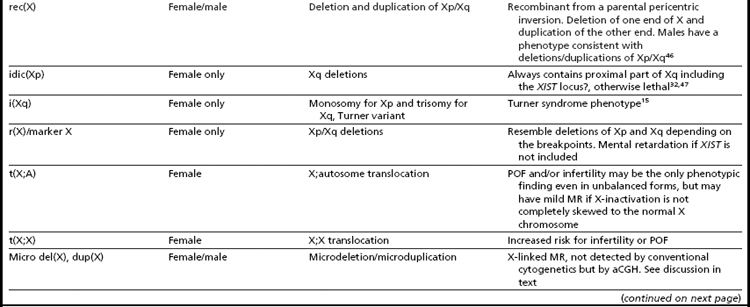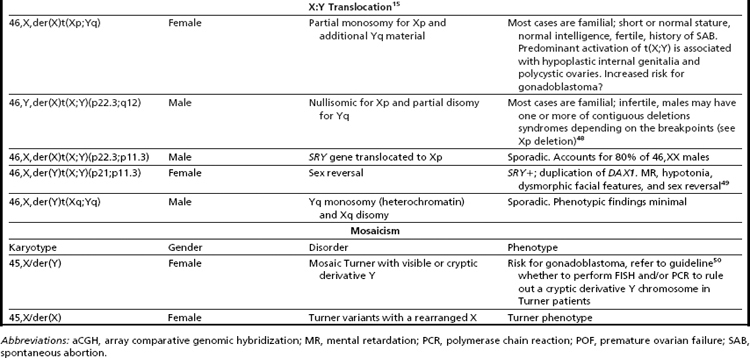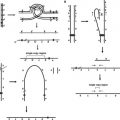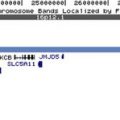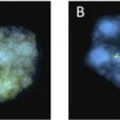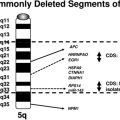Sex Chromosomes and Sex Chromosome Abnormalities
Department of Genetics, Kaiser Permanente, San Jose Medical Center, San Jose, CA 95123, USA
Keywords
• Sex chromosome • Sex chromosome abnormalities • X-inactivation • Mosaicism • X-linked mental retardation
Table 1 X and Y chromosome statistics
| X | Y | |
| Length (bp) | 155,270,560 | 59,373,566 |
| Known protein-coding genes | 825 | 47 |
| Novel protein-coding genes | 27 | 12 |
| Pseudogene | 762 | 318 |
| MicroRNA genes | 128 | 15 |
| Ribosomal RNA genes | 22 | 7 |
| Small nuclear RNA genes | 85 | 17 |
| snoRNA genes | 64 | 3 |
| Miscellaneous RNA genes | 52 | 2 |
| Total genes | 1965 | 421 |
| Single-nucleotide polymorphisms | 1,342,023 | 273,615 |
Data from Human Genome Build 19, UCSC, Ensembl release 61—Feb 2011. http://may2009.archive.ensembl.org/Homo_sapiens/Location/Chromosome?r=X:1-154913754 and http://may2009.archive.ensembl.org/Homo_sapiens/Location/Chromosome?r=Y. Accessed April 15, 2011.
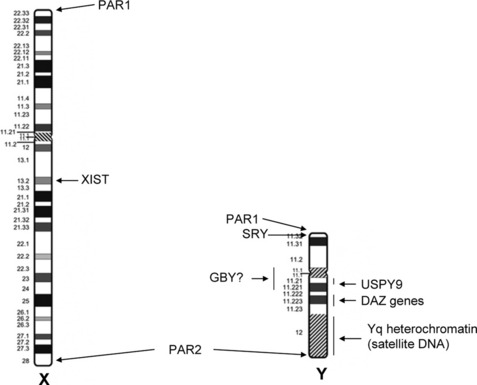
Fig. 1 X and Y chromosomes.
(Idiograms are from International System for Human Cytogenetic Nomenclature (ISCN) 2009, Data from Nussbaum R, Mclnnes RR, Willard HF. Thompson & Thompson Genetics in Medicine. 6th edition. Saunders: Elsevier; 2004.)
Sex Chromosome Abnormalities
Sex Chromosome Numerical Abnormalities
Klinefelter syndrome (47,XXY) is the most common sex chromosome numerical abnormality in males, occurring in 1 in 1000 males. It is often diagnosed by chromosome analysis following a referral for infertility or gynecomastia. The 47,XYY syndrome is another common abnormality in males, also occurring in 1 in 1000 males. It is often an accidental finding in chromosome analysis or observed in individuals referred to cytogenetics as part of laboratory tests to rule out fragile X syndrome because of behavioral problems. Some rare forms of sex chromosome numerical aberrations in males have been reported, including 48,XXYY, 48,XXXY, 49,XXXXY, and 49,XYYYY. A chromosome number over 50 with 6 or more sex chromosomes has never been reported and is likely lethal. For every extra X chromosome the IQ decreases about 15 to 16 points, with language most affected.6 All these patients have global developmental delay in gross motor, fine motor, and speech and language. Males with 48,XXYY have a higher IQ and adapt better in daily living skills compared with 48,XXXY and 49,XXXXY males, but all seem equally problematic with regard to communication and socialization skills.7 The intellectual deficiency in males with poly Y, such as 49,XYYYY, is not as proportional as in poly X.8 Height seems to be increased with the gain of an extra Y chromosome but decreased with the gain of an extra X chromosome.
Turner syndrome, or 45,X, is one of the most common sex chromosome numerical aberrations in females, occurring in 1 in 5000 females. The great majority of nonmosaic 45,X conceptions do not survive to term. It is still debatable whether all the surviving individuals with a nonmosaic 45,X karyotype found in amniotic fluid or a peripheral blood sample are actually mosaic in other types of tissues. The 47,XXX syndrome is seen in 1 in 5000 females and is often found by accident rather than because of a specific clinical indication. The majority of individuals with 47,XXX are not diagnosed. Although the clinical phenotype is usually mild, recent reviews suggest that many clinical issues need to be addressed.9–11 As in males, some rare forms of polysomy for the X chromosome, 48,XXXX12 and 49,XXXXX13,14 will result in severe developmental delay, mental retardation, and behavioral problems.
Mosaicism in sex chromosome abnormalities can present in a variety of combinations and potentially with different degrees of mosaicism in different tissues. This presents a great challenge in the clinical assessment of phenotypes, in particular when found in prenatal samples. Phenotypes are usually milder when there is a normal cell line, male or female, present, such as mosaic Turner syndrome or Klinefelter syndrome.15 However, gender or sexual development can range from male to female to ambiguous when there is a mixture of cell lines with or without the Y chromosome (Table 2).
Some rare forms of mosaicism have been reported, such as Klinefelter variant with a 46,XX cell line20,21 or mosaic 45,X/47,XYY or 45,X/46,XY/47,XYY.22,23 Mosaicism may be present in as many as 4 or 5 different cell lines.24,25 Whether the patient has a Turner syndrome phenotype largely depends on the percentage and the distribution of the 45,X cell line, and whether the patient has male external genitalia depends on the presence in the gonads of a Y chromosome containing cell line. Caution should be taken when interpreting a low percentage of X chromosome aneuploidy in advanced aged women, usually referred to cytogenetics with recurrent miscarriages. The most common karyotypes are 45,X/46,XX and 45,X/47,XXX/46,XX. X chromosome aneuploidy is usually under 10%. These women usually do not have a Turner syndrome phenotype, and there is no evidence that the finding is associated with miscarriages.15,17–19 However, if the woman is younger and/or the X chromosome aneuploidy level is higher than expected for her age, careful clinical evaluation is warranted (Table 3).26
Stay updated, free articles. Join our Telegram channel

Full access? Get Clinical Tree


